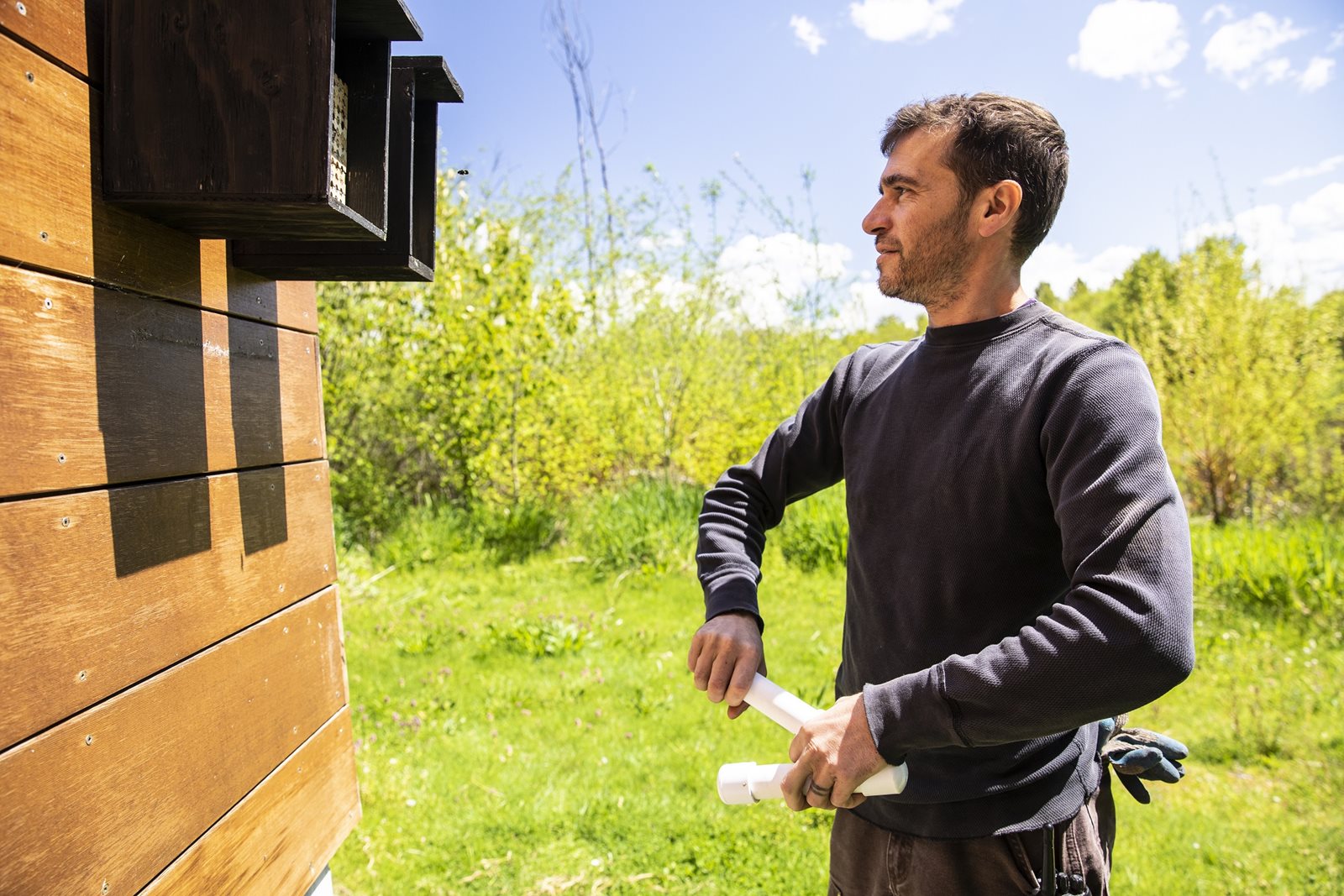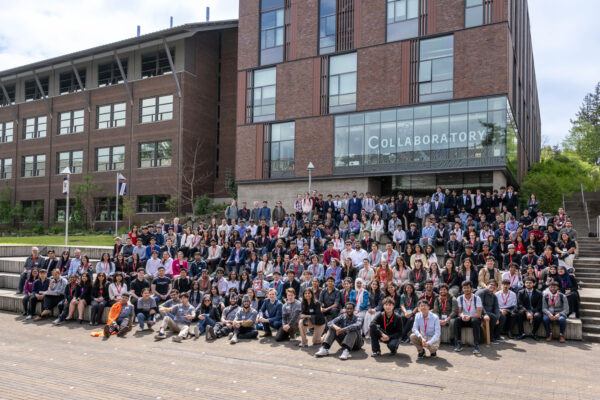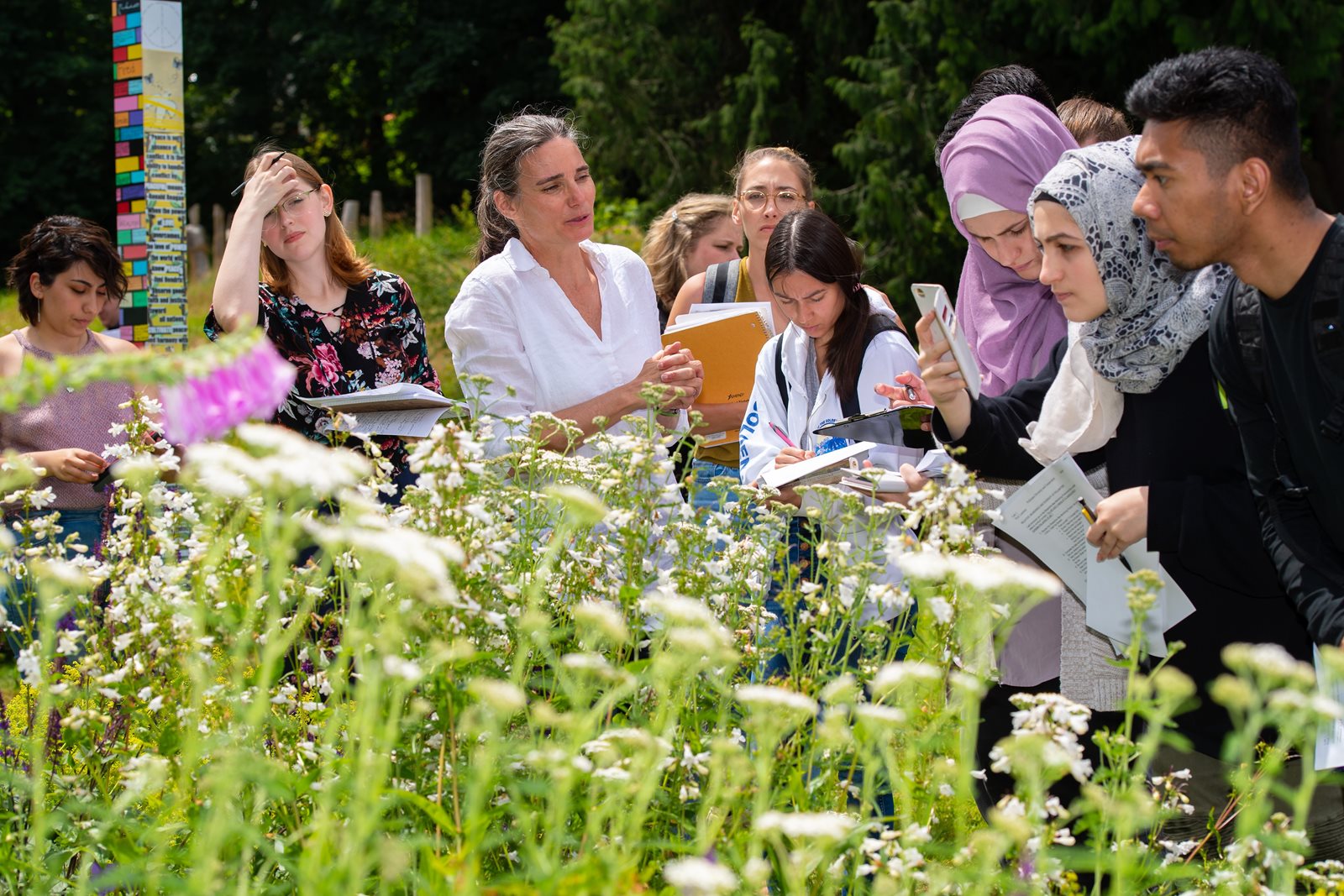
By Douglas Esser
The green darner dragonfly is the official insect of the state of Washington. If the University of Washington Bothell had an insect it would be the bee. Bees embody the university’s commitment to environmental sustainability in academics and practice.
Campus flower beds and gardens buzz with insects. Students study them in classes. Researchers count and survey them. Bees also are a community-based learning opportunity with partner 21 Acres, a Woodinville center for sustainable agriculture. UW Bothell is intimately connected with bees.
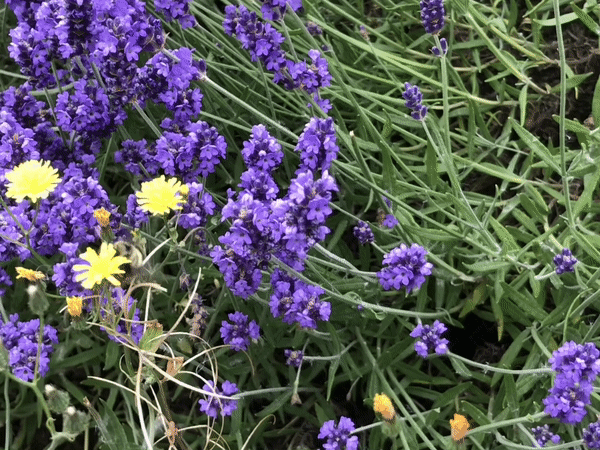
“We are just trying to involve as many people with bees as possible so that we can raise awareness about what’s going on with the bees, why their populations are decreasing and how we can do little things to support them,” said Alexa Russo, the campus sustainability coordinator.
One of every three bites of food that people eat depends on pollination, Russo said. As a keystone species on which ecosystems depend, bees are necessary for human survival.
‘How cool is that!’
Many students are scientifically introduced to bees by Amy Lambert, a lecturer in the School of Interdisciplinary Arts & Sciences, whose courses include Pollinator Diversity and Conservation. Lambert teaches the course spring and summer quarters to classes that range from 15 to 30 students. Most are majoring in an environmental science or biology or looking to fulfill a natural world credit requirement. Classes meet on Fridays, and students spend hours in every class outdoors, sticking their noses into flowers.
On the first class of summer quarter, Lambert led students through the plantings along the Promenade north of the campus library. She pointed out blooming foxglove, daisy and fireweed flowers and described how bees are crucial to reproduction. “It’s all about the pollen.”
Lambert tore into a purple foxglove blossom and pointed out dots that look like runway landing lights to a bee’s ultraviolet vision. A daisy is not a single flower but hundreds of small flowers clustered in the yellow center — tiny flowers for the tiny pollinators, she said. “How cool is that!”
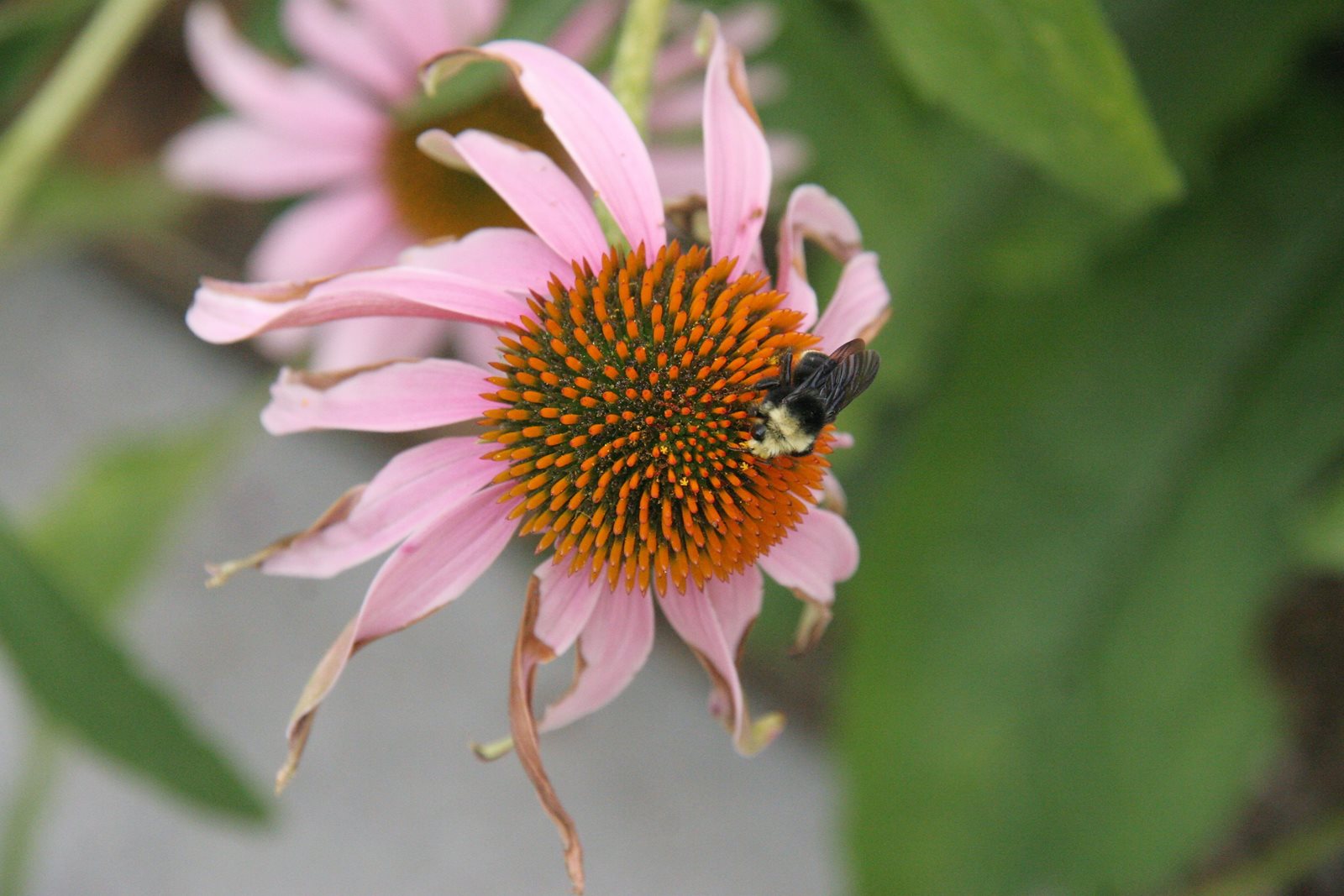
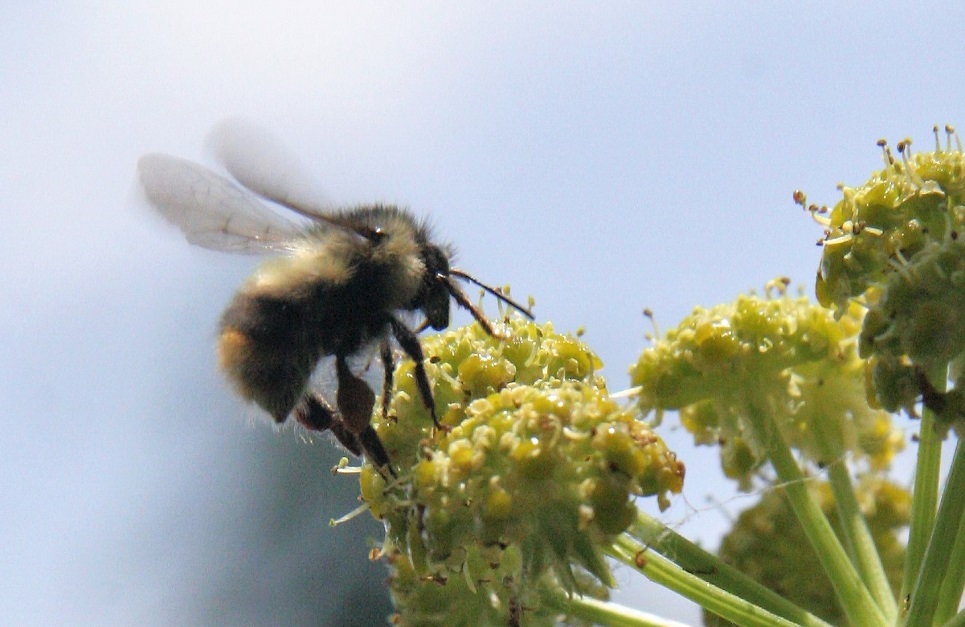
Pollinator photos by Alexa Russo
Bombus among us
Lambert taught her students how to look. First, stop and take a few seconds to behold a stand of flowers, she said. Then focus on anything that moves.
“Usually we pass by and don’t look,” Lambert said. “Here is a Bombus (bumblebee) right here. Notice how it’s foraging. Get in the habit of seeing.”
She taught the students how to conduct a transect — a survey of a 3-foot swath along a measured distance — calling out and recording the pollinators: “Wasp!” “Bombus!” “Honeybee!” And when some students came up empty, she told them, “No data is data, too.”
In her years of teaching about pollinators, Lambert said the most common reaction from students is, “Wow! I had no idea.” They learn so much about something that’s been under their noses for a long time, Lambert said.
“And then you see it and learn about it. You’re just amazed by the complexity of the environment, complexity of relationships between insects and plants,” Lambert said.
From relationships to advocacy
Through hands-on observational activity, students learn to appreciate bees and other pollinators such as flies and butterflies.
“Ultimately that’s what I’m after — for them to develop this relationship with the observation of pollinators, so that whenever there’s an opportunity for them to advocate for native pollinators, they know what they’re talking about,” Lambert said.
Lambert has seen students from her courses become advocates. One of them is Russo (Environmental Studies ’17), now a leader in campus sustainability. Nan Affleck Hardt (Culture, Literature & the Arts ‘16) is the apiary manager at 21 Acres. Olivia Shangrow (Biology ’17), is a biologist with the Bothell business Rent Mason Bees.
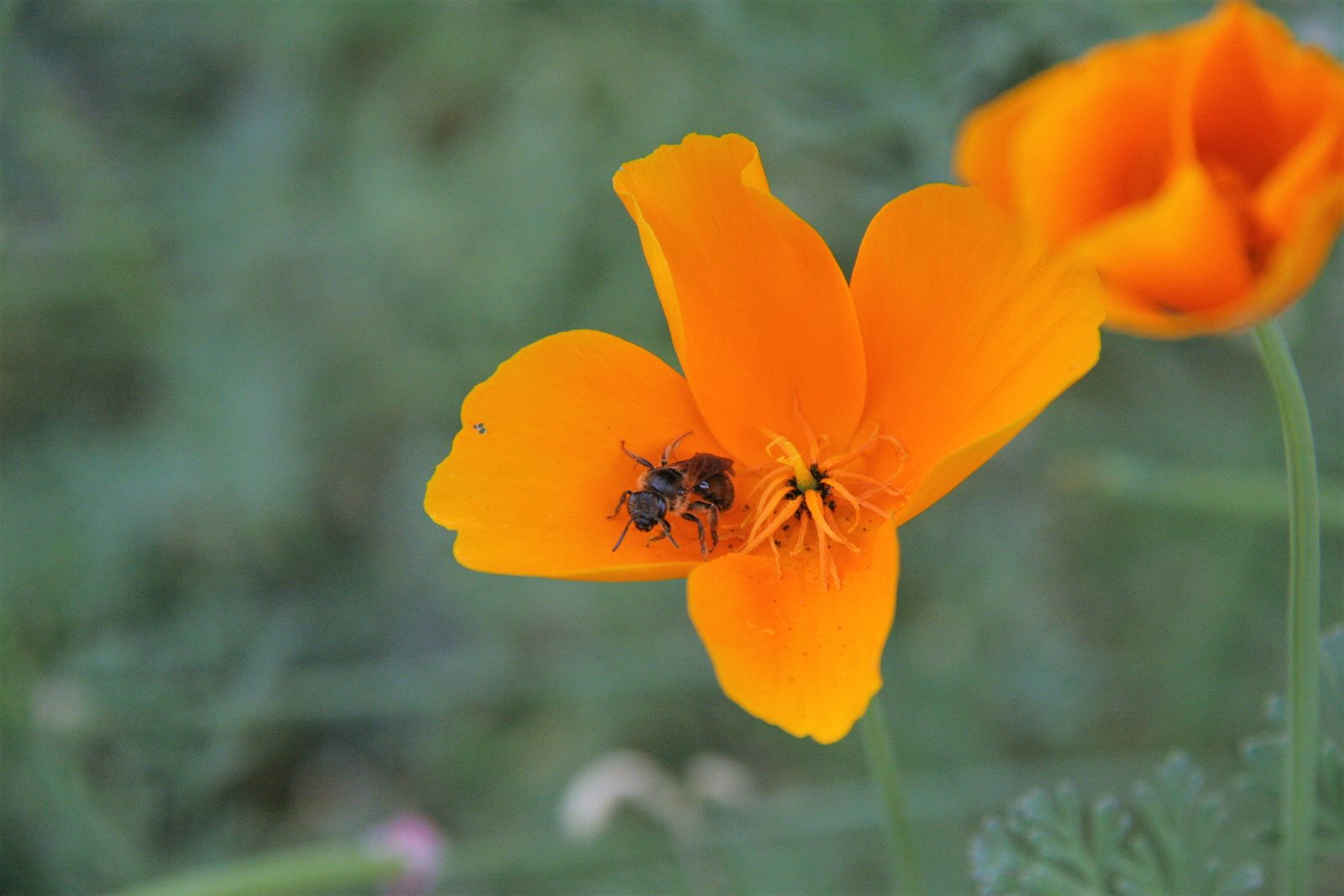
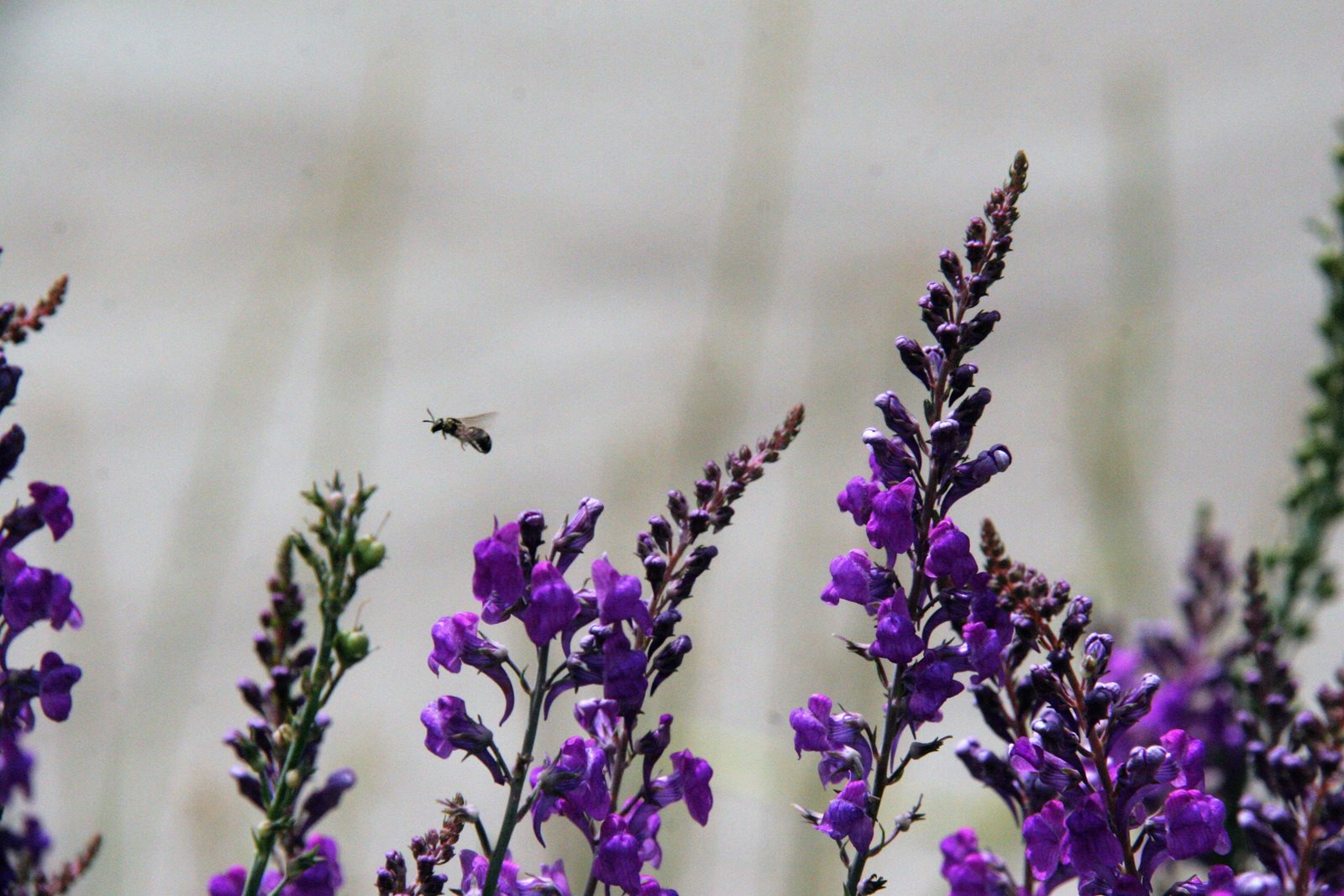
Pollinator photos by Alexa Russo
Oh say, can you CCUWBee?
Started in 2012, the CCUWBee initiative, a collaboration of Cascadia College and the University of Washington Bothell, became more formal in the past two years through Russo’s office. It’s an opportunity for Lambert’s students to continue monitoring pollinators on campus. There are two projects. One is a survey of the abundance of pollinators, and the other is an archive of bee photos. The archive is being prepared for the campus library and will be similar to its wetlands collection.
“We’re building this database in anticipation that the data could be used as climate changes or the landscape changes in some form. It could be used as a reference in a baseline for future studies,” Lambert said.
Two students who took part in last year’s surveying, Jordan Fette and Kristen Attebery, displayed their research in the spring Undergraduate Research Symposium on the UW campus in Seattle. Among their findings for the 2018 survey: 55% were bumblebees, 22% other native bee species and 23% honeybees, which are not native to North America.
Some of Lambert’s students typically volunteer to work with CCUWBee. A couple more work on the initiative with Russo through the Office of Community Based Learning (CBLR). Some students each quarter also use the CBLR office to volunteer with 21 Acres. The whole class visits the Woodinville farm to see its honeybee apiary and the native bees on a hedgerow of native plants. For more hands-on experience, the CBLR volunteers may work with the beekeeper or help with maintenance.
Where the bees are
Students may also choose independent research through Lambert with Rent Mason Bees, which brings bee boxes to campus in the spring. Mason bees are gentle, nonhoney producing solitary pollinators that lay their eggs in tube-like holes, which they cap with a masonry type plug. Students may rent the bees for their own studies.
Bees also are on the minds of students involved in the UW Restoration Ecology Network. Lambert teaches an Introduction to Restoration Ecology course that incorporates an understanding of pollinators.
“I feel incredibly lucky to work on a campus on the suburban-rural edge, and one that at this point is not very urbanized. We don’t keep honeybees on campus. What we do have is an incredible diversity of bees, especially bumblebees in a very small area,” Lambert said. “I’m all about conservation of native bees.”
No stings attached
No students in her courses have been stung, Lambert said. One student this summer, Rylee Appelgate, said she overcame a fear of bees on the first day. Ever since she had been stung as a young child “anything that was buzzing or black and yellow near me was dangerous,” she said.
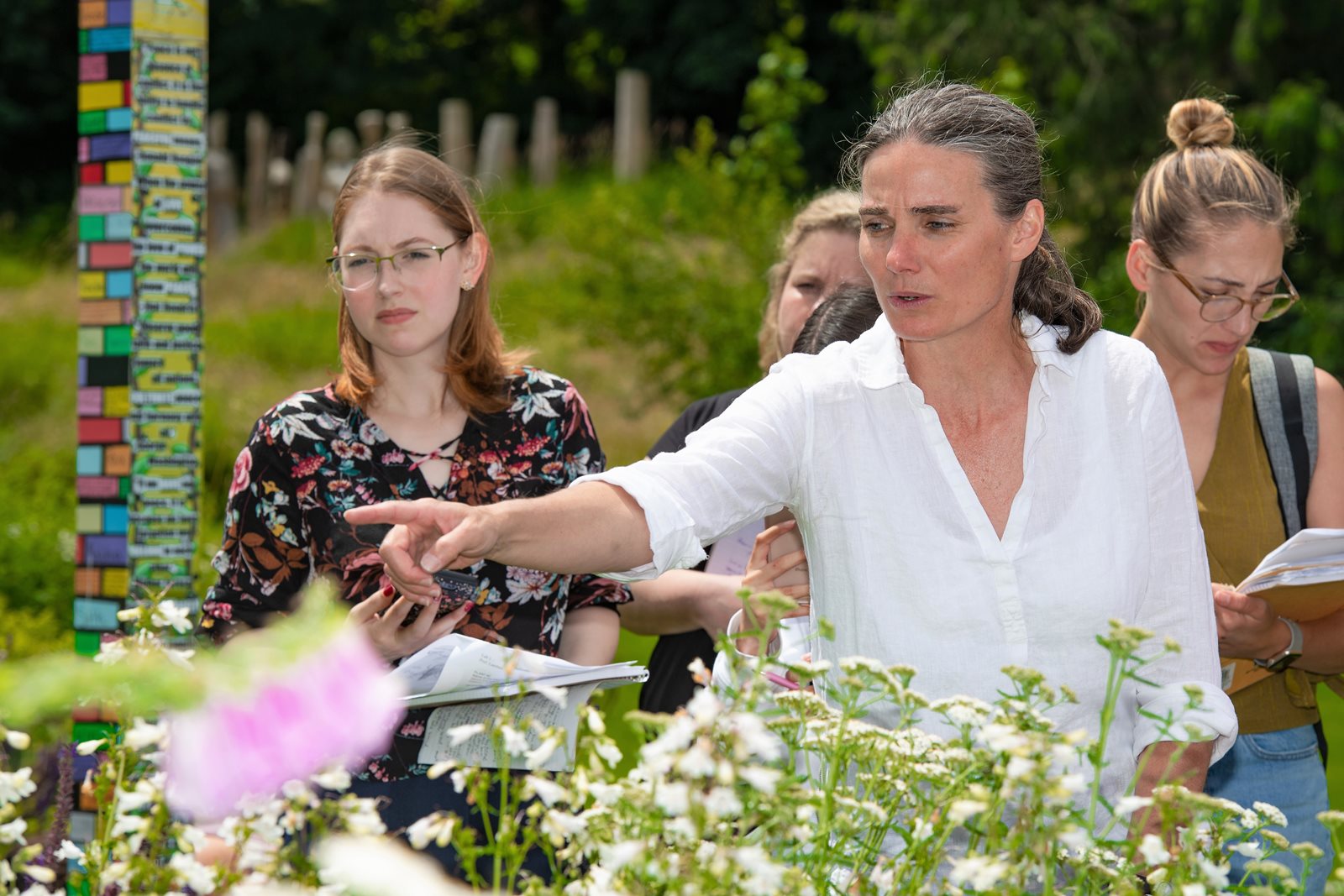
Appelgate learned that most bees stick to their business. It was more likely she was stung by a wasp. As a Biology major graduating in the fall, Appelgate said the pollinator class fit her interests in conservation and resource management. “I hope to learn strategies that can be applied beyond bees,” she said.
Asma Tadmori (Biology, summer ’19) learned about the impact of bee decline. “As humans we should do something to help.”
Cerina Mick (Media & Communications fall ’19) liked taking a science class outside her field. She was surprised to learn there are many native bees but only one species of the domesticated honeybee. Alfred Albear (Biology fall ’19), who plans to attend medical school, was interested in bee stings — toxins and how they affect the immune systems in humans.
Grounds for bees
These are hard times for many bees. Some populations are in decline due to loss of habitat, pesticide poisoning and the spread of diseases and parasites. In its management practices, the campus avoids poisons, fosters native plants and practices low-maintenance landscaping.
Groundskeepers, who are responsible for both UW Bothell and Cascadia College properties, intentionally plant flower beds that will always have something blooming. Groundskeeper Robby Wrench is a particular fan of pollinators. He has exhibited his bee photos in Mobius Hall and the Center for Urban Horticulture in Seattle.
Lambert said her teaching and research about bees are made possible by the groundskeepers.
“What they do and how they manage this landscape makes all the difference. They are fully sustainable — no pesticides, no insecticides. They manage for keeping pollinator areas open,” she said. “You can look around. There’s plenty of pollinator habitat left unmowed. That makes for a rich pollinator habitat.”
